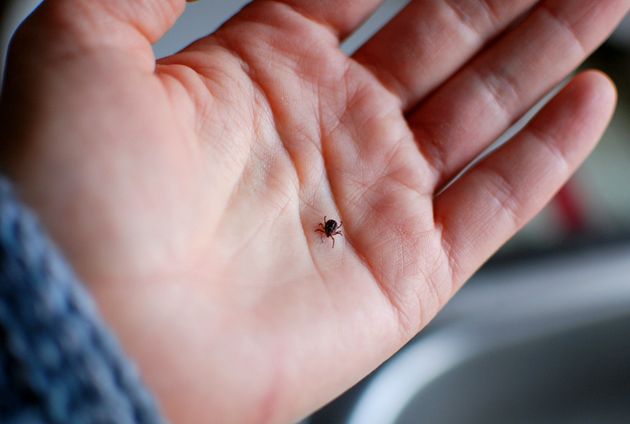There are around 3,000 cases of Lyme disease – transmitted by ticks – in England and Wales each year. However a new report from the National Institute of Health and Care Excellence (NICE) suggests this might actually be more of a baseline figure, as there is no requirement to notify cases to local authorities.
The latest statistics from Public Health England show there were 133 cases in England during the first quarter of this year, compared to 200 in 2017. Of these, many were from London, the South East and South West.
While the decrease in cases is a positive sign, it’s worth noting we did have a particularly cool start to the year and ticks thrive in the heat. There is currently no data available on whether cases have risen during the heatwave, and with some people going undiagnosed, the best thing to do is be aware.

What causes Lyme disease?
The disease is caused by a type of bacteria that is present in many animals, including mice, deer and pheasants. If a tick bites one of these animals it becomes infected and can then pass the bacterial infection on to humans by biting them.
It’s useful to know that being bitten by a tick doesn’t immediately lead to infection. One doctor, Richard Besser, previously told ABC News: “You think it bites you and you get the infection but actually you have about 36 hours from the time of the bite to remove it before you get sick.”
Symptoms
One of the first signs of an infected tick bite is a rash, which looks like a bull’s eye on a dart board. Other early symptoms include aching joints and muscles, plus a stiff neck and fever.
Symptoms are thought to begin showing at around 30 days after a person has been bitten.
If the condition is left untreated, symptoms can progress to numbness of the limbs and temporary paralysis of your facial muscles. In rare cases, Lyme disease can lead to inflammation of the heart muscles, which can cause the heart to beat irregularly.
Treatment
Oral antibiotics are the most common treatment used for Lyme disease. In severe cases, antibiotic injections are sometimes used.
The good news is that if Lyme disease is spotted early, treatment can be effective.
Prevention
:: Ticks are more common in wooded and moorland areas, especially in long grass. If you walk your dog, or go on walking holidays, try to avoid these areas and stick to paths.
:: Wear long sleeves and trousers, tucking the bottom of trousers into socks. By wearing light-coloured clothing you will be able to see if ticks are crawling on you.
:: When you come back from the outdoors, check yourself, children and pets thoroughly for ticks.
:: Wear insect repellent specifically designed to repel ticks.
:: Remove any ticks found on your body as quickly as possible.